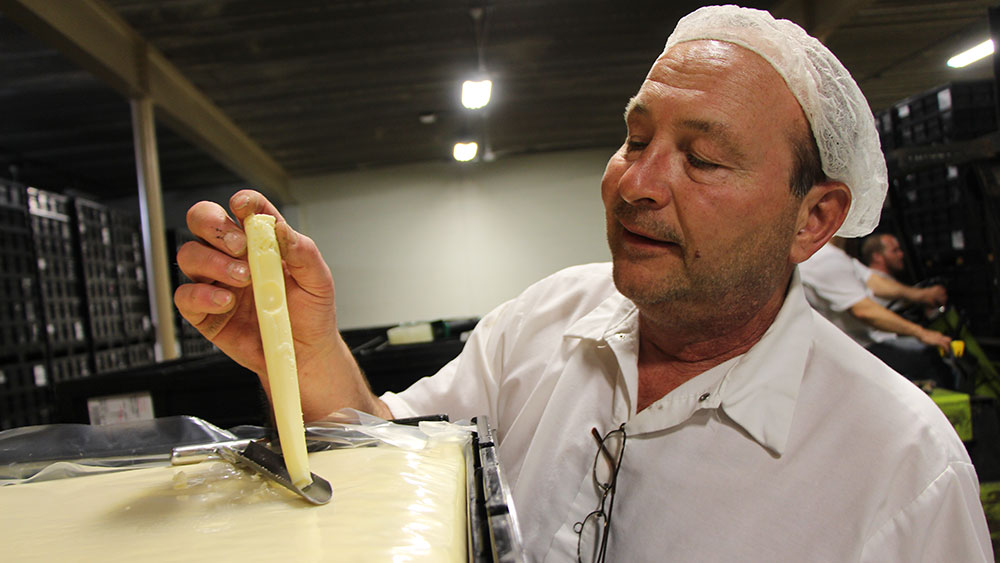Unlocking the Tricks of Artisanal Cheese Making: A Step-by-Step Do It Yourself Overview
In the realm of cooking workmanship, artisanal cheese making stands as a testament to the fragile balance in between practice and technology. As we get started on this trip to demystify the art of creating beautiful cheeses, we are encountered with a tapestry of skills and keys waiting to be unwinded.
Picking the Right Milk
When beginning on the trip of artisanal cheese making, the selection of milk plays an essential function in figuring out the quality and characteristics of the last item. The kind of milk chosen influences the taste, texture, and generally account of the cheese.
Additionally, the resource of the milk, whether from cows, goats, lamb, or buffalo, adds distinctive tastes and characteristics to the cheese. Each type of milk brings its very own nuances, enabling for a wide range of cheese selections to be crafted based on the selected milk.
Culturing and Coagulating
To start the cheese-making procedure, the critical actions of culturing and coagulating must be thoroughly executed to transform milk into curds and whey. Culturing involves presenting advantageous germs to the milk, which then starts the fermentation procedure. These bacteria transform lactose (milk sugar) right into lactic acid, producing the acidic environment required for coagulation. The sort of culture used can considerably impact the taste, appearance, and ripening of the final cheese item.

The timing and temperature control throughout culturing and coagulation are critical factors that affect the final end result of the cheese. Proper execution of these actions is vital to ensure the desired texture, taste, and consistency of the artisanal cheese being produced.
Draining Pipes and Pressing Curds
After the milk healthy proteins have coagulated and the curds have been cut to launch whey, the next vital action in artisanal cheese making entails draining and pressing the curds to accomplish the wanted structure and uniformity of the last cheese item. Draining is the procedure of dividing the curds from the whey. This can be done by transferring the curds right into a cheesecloth-lined bowl-shaped sieve or mold and permitting the whey to drain off naturally. The time for draining can vary depending upon the sort of cheese being made and the wanted wetness material.
When the curds have sufficiently drained pipes, the next step is pressing. Pressing assists eliminate any type of staying whey and compacts the curds to form a strong cheese wheel. Pushing can be done using specialized cheese presses that apply regular and gentle stress over a time period. The period and pressure used throughout pushing will affect the last structure of the cheese, from creamy and soft to tough and company. Proper pushing and draining are vital steps that considerably impact the high quality and qualities of the artisanal cheese being produced.
Aging and Flavoring Techniques
Executing thorough aging and flavoring methods is pivotal in boosting the depth and complexity of artisanal cheeses, elevating their taste accounts to elegant degrees of improvement and refinement. Aging plays an essential function in developing the special tastes and appearances that identify artisanal cheeses. Throughout the aging process, cheeses are stored in meticulously managed settings where aspects such as moisture, temperature level, and air flow are controlled to motivate the development of advantageous molds and germs. This controlled environment enables celebrity to develop gradually, creating abundant tastes and complex aromas.
Flavoring strategies additionally contribute substantially to the last taste of artisanal cheeses. Cheesemakers may choose to present additional flavors by including ingredients such as herbs, spices, or perhaps fruits into the cheese throughout the manufacturing process. Furthermore, some cheeses are washed or rubbed with different liquids, such as brine or alcohol, to boost their flavors and appearances.
Covering and Keeping Cheeses

Conclusion
To conclude, grasping the art of artisanal cheese making includes meticulously selecting the right milk, adhering to precise culturing and coagulating processes, draining and pushing curds effectively, and using different aging and flavoring strategies. By adhering to these actions faithfully and with interest to information, you can produce your own delicious and special cheeses in the house. Bear in mind to cover and save your cheeses effectively to make certain optimal taste and structure Read Full Article advancement. Satisfied cheese making!
Each type of milk brings its very own nuances, enabling for a wide variety of cheese ranges to be crafted based on the picked milk.After the milk healthy proteins have actually coagulated and the curds have been cut to launch whey, the next vital step in artisanal cheese making entails draining pipes and pressing the curds to achieve the preferred structure and consistency of the last cheese item. The majority of cheeses must be covered in wax paper or cheese paper to permit them to breathe while protecting them from drying out. For cheeses that require to proceed aging, such as bloomy rinds or washed skins, ensure they are kept in an amazing environment like a cheese cavern or a fridge established to the ideal temperature. By paying focus to the covering and storage space of great site artisanal cheeses, cheese manufacturers and lovers can protect the honesty of these delicacies and totally enjoy their complicated flavors.